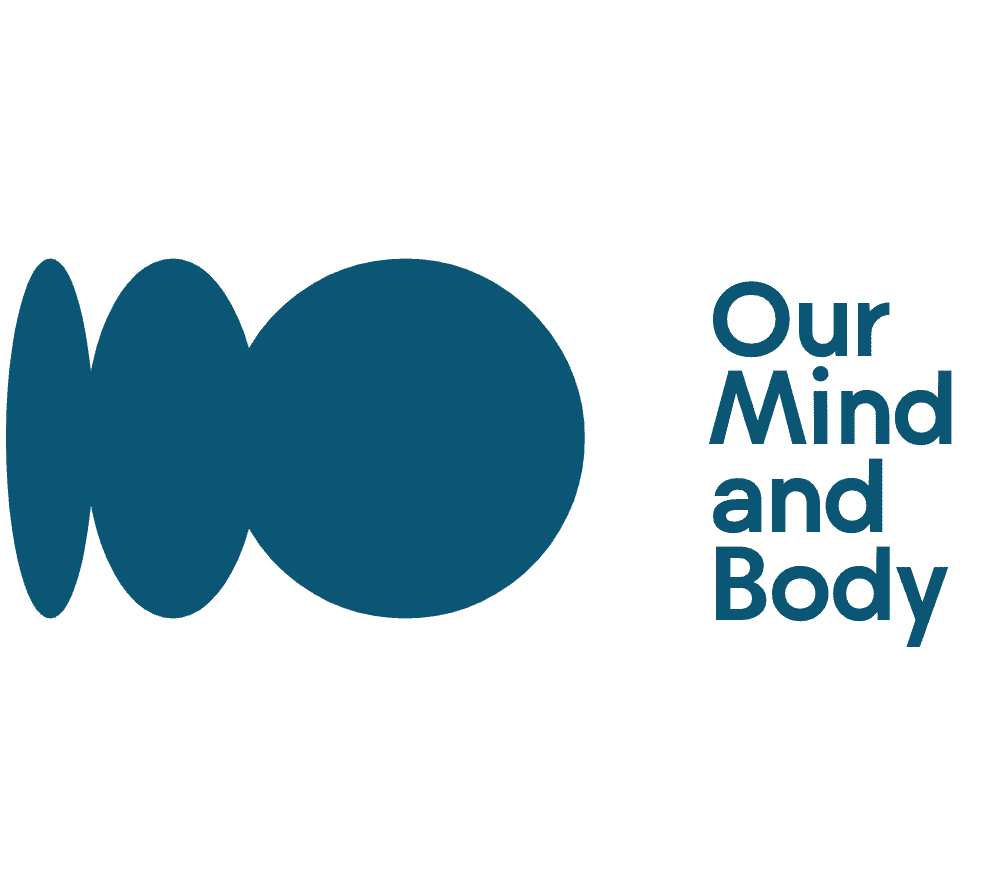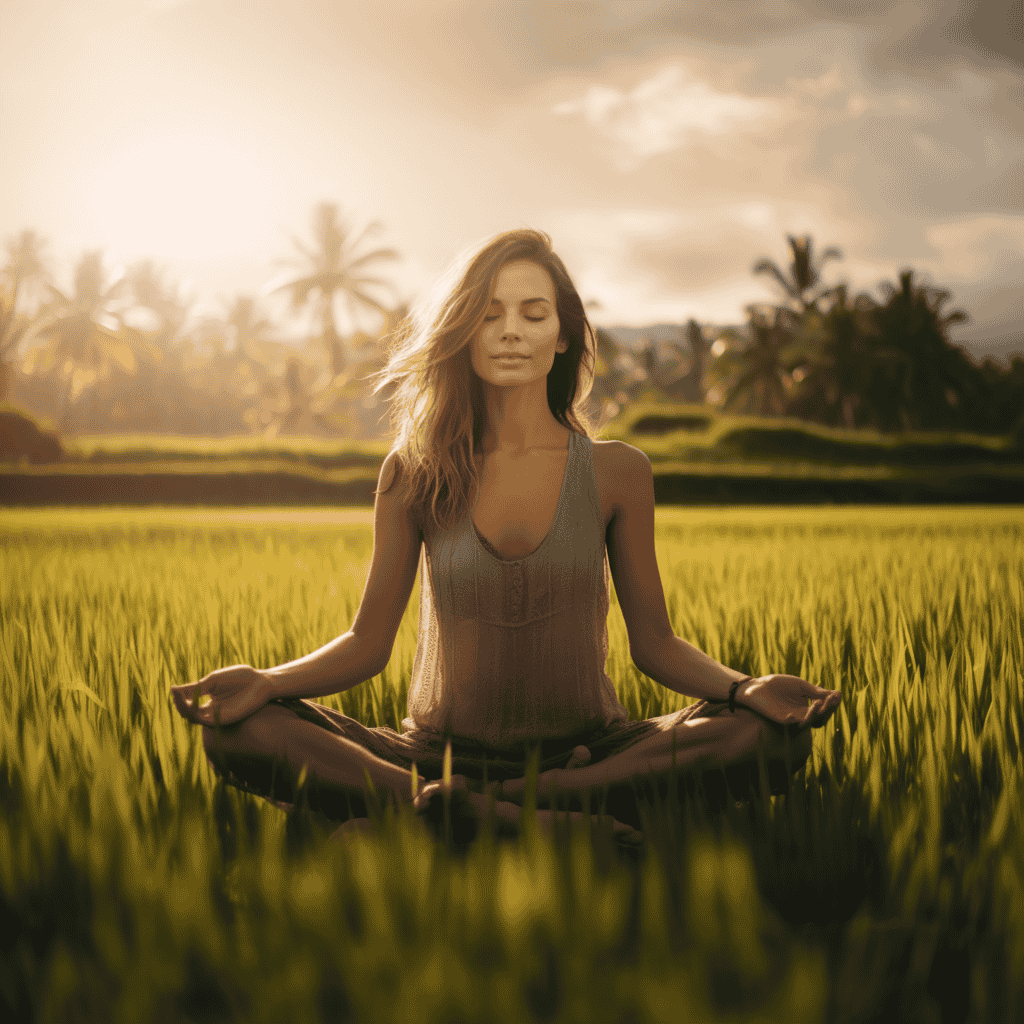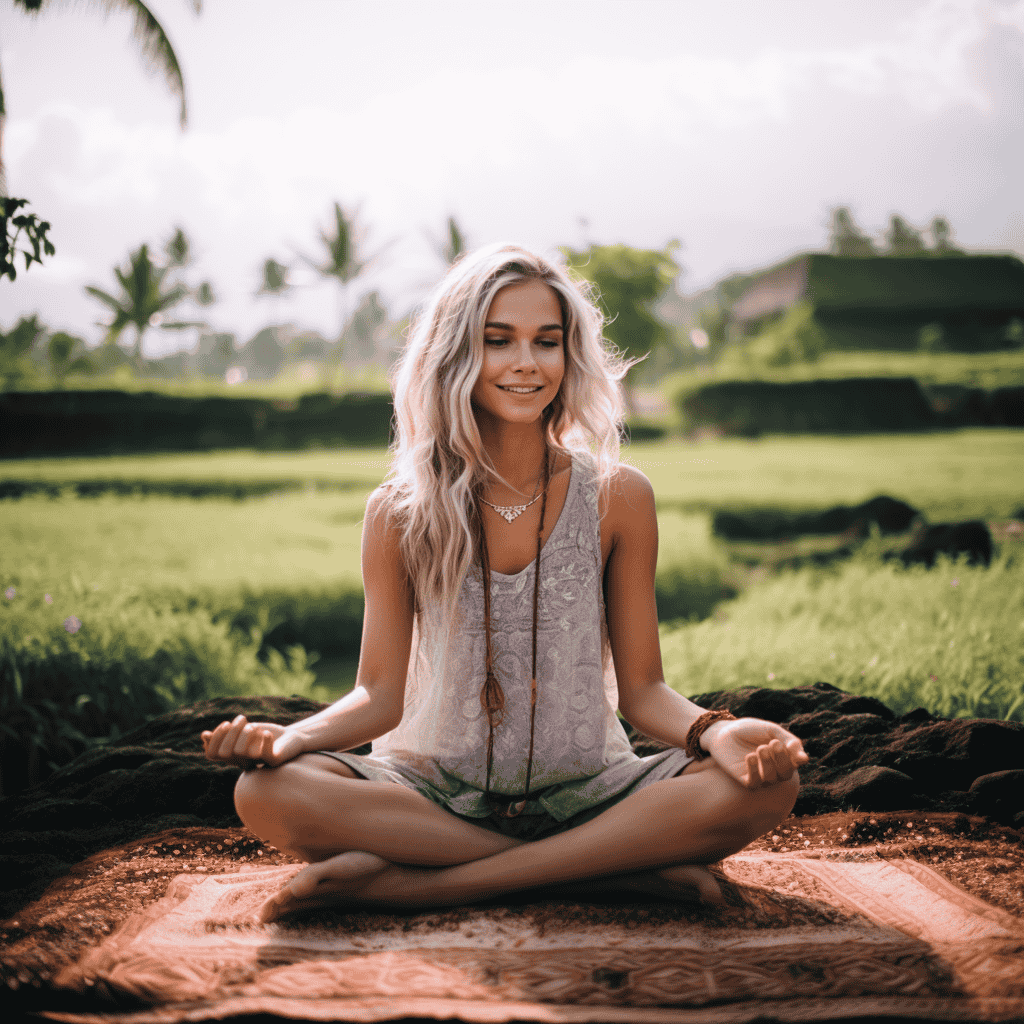Yoga
Choosing The Perfect Men’s Yoga Shorts: Ideal Fit, Material, And Benefits
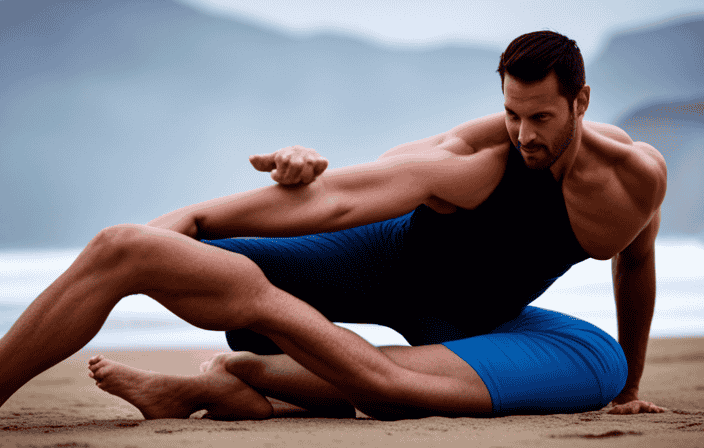
When it comes to searching for the ideal men’s yoga shorts, it’s akin to discovering a peaceful flow in your routine.
Picture this: a pair of shorts that embrace your body, allowing for fluid movements and unrestricted stretches. Imagine the fabric, breathable and durable, keeping you cool and comfortable as you flow through each pose.
These shorts effortlessly balance style and functionality, offering the perfect length for optimal range of motion.
Today, we explore the key factors, compare brands, and discover how the right yoga shorts can enhance your practice.
Key Takeaways
- The ideal men’s yoga shorts should fit well on the body, allowing for free movement and ensuring comfort during practice.
- It is important to choose yoga shorts made of breathable and durable material to enhance ventilation and regulate body temperature.
- Men’s yoga shorts should fall between the knees and hips, providing a full range of motion, flexibility, and ease of movement during poses.
- When comparing workout shorts and yoga pants, personal preference and individual needs should be considered, as both options offer different benefits.
What to consider?
When considering what to look for in men’s yoga shorts, I take into account factors such as breathability, a good fit for comfort and flexibility, durability, suitable length for ease of movement, and the ability to allow for a full range of motion during my practice.
Breathable material is essential to keep me cool and prevent discomfort during intense workouts. A good fit ensures that the shorts stay in place and don’t restrict my movements. I also look for durable material that can withstand regular use and washing.
The length should be just right, falling between my knees and hips, to allow for ease of movement and flexibility during poses. Overall, finding the perfect men’s yoga shorts requires considering these factors to enhance my practice and ensure optimal comfort and performance.
Fit and Comfort
For me, the most important aspect of yoga shorts is ensuring a comfortable and snug fit that allows for free movement. It is crucial to find shorts that fit well on the body without feeling restrictive. The ideal fit should provide comfort during practice and enhance flexibility during poses. When it comes to material, breathability is key. The fabric should be breathable and durable, allowing for ventilation and helping to regulate body temperature. To paint a picture for you, take a look at the table below:
| Fit | Comfort |
|---|---|
| Snug but not too tight | Ensures ease of movement |
| Allows for free movement | Provides comfort and support |
| Fits well on the body | Enhances ventilation |
| Should not feel restrictive | Helps regulate body temperature |
Finding yoga shorts that prioritize fit and comfort will greatly enhance your yoga practice by allowing for a full range of motion and ensuring ease of movement.
Ideal Material
I prioritize finding yoga shorts that have a breathable and durable fabric to ensure comfort and enhance my practice. The ideal material for men’s yoga shorts should allow for proper ventilation, keeping me cool during workouts. It should also be durable, able to withstand the rigors of my practice without easily tearing or wearing out.
When I’m in the middle of a challenging pose, the last thing I want to worry about is my shorts falling apart. Additionally, the material should provide enough stretch and flexibility, allowing me to move freely and comfortably throughout my practice. It should not restrict my movements or hinder my range of motion.
By choosing yoga shorts with the right material, I can ensure that I can fully focus on my practice and optimize my performance.
Length and Range of Motion
To ensure maximum flexibility and ease of movement, the length of my yoga shorts should fall between my knees and hips. This length allows me to perform a full range of motion without any restrictions. Whether I’m in a forward fold or a deep lunge, having shorts that hit this sweet spot ensures that I can move freely and comfortably.
It also provides the flexibility I need to transition between poses smoothly. Not only does this length enhance my practice, but it also offers a cooling effect during intense workouts. With my legs exposed, I can feel the air circulating and keeping me comfortable.
Overall, choosing yoga shorts with the right length is essential for optimizing my performance and enjoying a hassle-free practice.
Comparison with Yoga Pants
When comparing yoga shorts and yoga pants, personal preference plays a significant role in deciding which option is best for me. Both have their advantages and it ultimately depends on my comfort and needs.
Yoga shorts offer breathability and flexibility, allowing for a full range of motion during practice. They provide enhanced cooling effects and easier movement during challenging poses.
On the other hand, yoga pants provide comfort and support, ensuring ease of movement and flexibility during poses.
It really comes down to what I prioritize in my practice. If I value breathability and ventilation, yoga shorts are the way to go. If I prioritize comfort and support, yoga pants are a better fit.
It’s important to consider my individual preferences and practice style when making this decision.
Key Factors
Now that we have compared workout shorts and yoga pants, let’s dive into the key factors to consider when choosing the perfect men’s yoga shorts.
Breathable material is crucial for ventilation during intense practices, ensuring that you stay cool and comfortable.
A good fit is also essential, allowing for flexibility and ease of movement without feeling restrictive.
Durability is important for long-lasting use, as yoga shorts should withstand frequent stretching and movement.
The suitable length falls between the knees and hips, providing a full range of motion during poses.
By considering these key factors, you can find the ideal men’s yoga shorts that enhance your practice.
Remember, comfort and functionality are key when it comes to optimizing your yoga experience.
Comparison of Brands
I prefer to compare different brands when looking for men’s yoga shorts. It’s important to find a brand that meets my specific needs and preferences.
Here are five factors I consider when comparing brands:
-
Quality: I look for brands that use high-quality materials and have a reputation for durability. This ensures that my yoga shorts will last through countless practices.
-
Style: I like to find brands that offer a variety of styles and designs. This allows me to choose a pair of yoga shorts that not only perform well but also align with my personal style.
-
Price: While price isn’t the only factor I consider, I do take it into account. I look for brands that offer good value for the price, balancing quality and affordability.
-
Customer reviews: I read customer reviews and ratings to get a sense of other people’s experiences with the brand. This helps me gauge the overall satisfaction and reliability of the product.
-
Fit: Finally, I make sure to choose a brand that offers a good fit for my body type. It’s important that the yoga shorts are comfortable and allow for a full range of motion during my practice.
By considering these factors, I can confidently choose the perfect men’s yoga shorts that meet my needs and enhance my yoga practice.
Enhancing Your Yoga Practice
To optimize my yoga practice, I focus on enhancing flexibility and comfort by selecting yoga shorts that allow for a full range of motion and provide breathability. When it comes to finding the perfect pair, I consider factors like body type, fit, and material. I want shorts that not only feel comfortable but also enhance my performance on the mat.
To help you in your search for the ideal men’s yoga shorts, I’ve created a table comparing three popular brands: Fabletics, Lululemon, and Vuori. Each brand offers its unique style, quality, and price range, allowing you to choose based on your personal preferences and budget.
| Brand | Style | Quality |
|---|---|---|
| Fabletics | Trendy | Good |
| Lululemon | Classic | Excellent |
| Vuori | Athleisure | High |
Remember to research customer reviews and ratings, assess brand reputation, and consider your individual needs when making your final decision. By selecting the right yoga shorts, you can optimize your practice and take your yoga journey to new heights.
Frequently Asked Questions
Are there any specific brands that offer plus-size options for men’s yoga shorts?
Yes, there are specific brands that offer plus-size options for men’s yoga shorts. Some popular brands include Nike, Under Armour, and Adidas. These brands offer a range of sizes to accommodate different body types and provide comfortable and stylish options for everyone.
Can I wear compression shorts as yoga shorts for men?
Compression shorts can be worn as yoga shorts for men, offering a snug fit and support. However, they may lack the breathability and flexibility of dedicated yoga shorts. It’s important to prioritize comfort and freedom of movement for an optimal yoga practice.
What type of waistband is best for men’s yoga shorts?
The best type of waistband for men’s yoga shorts is one that is elastic and adjustable. This allows for a secure and comfortable fit, ensuring that the shorts stay in place during your yoga practice.
Are there any specific features to look for in men’s yoga shorts for hot yoga or intense workouts?
When looking for men’s yoga shorts for hot yoga or intense workouts, it’s important to prioritize features like moisture-wicking fabric, quick-drying material, and breathable construction. These elements will help keep you cool, comfortable, and focused during your practice.
Do men’s yoga shorts typically have pockets for storage?
Yes, men’s yoga shorts typically have pockets for storage. These pockets are designed to hold small items like keys or a phone while you practice. They are usually located on the sides or back of the shorts for easy access.
Say hello to Cypress, the soulful wordsmith behind the insightful articles at OurMindAndBody.com. Cypress is a gifted writer who weaves words with grace and precision, using language as a powerful tool to inspire, heal, and uplift the spirits of readers.
With a background in literature and a passion for personal growth, Cypress brings a unique perspective to the world of well-being and spirituality. Having experienced the transformative effects of meditation and yoga firsthand, Cypress is deeply connected to the essence of these practices and their potential to enrich lives.
Yoga
Starting A Yoga Youtube Channel: Benefits, Steps, And Tips
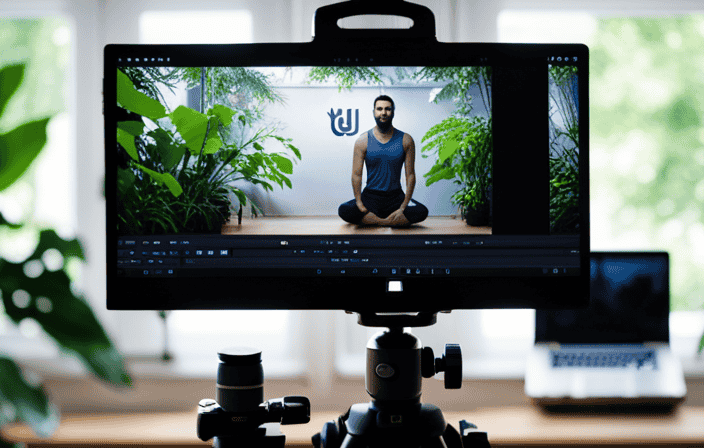
Picture yourself spreading your love for yoga to a global audience, motivating them to discover harmony, power, and peace in their existence. Launching a yoga channel on YouTube gives you the opportunity to achieve precisely this.
With the potential to reach a vast audience, monetize your content, and establish your brand, this venture offers endless possibilities.
In this article, I will guide you through the benefits, steps, and tips to kickstart your journey as a yoga influencer on YouTube.
Get ready to flow, connect, and transform lives through the power of online yoga.
Key Takeaways
- Starting a yoga YouTube channel provides an opportunity to reach a global audience of 2.1 billion YouTube users and gain recognition and support from viewers.
- Monetization is possible through ad revenues and paid courses, making it a lucrative venture for yoga enthusiasts.
- To set up a yoga YouTube channel, one must choose between a personal or business channel, select the category, name the channel, and add channel art with recommended pixel size.
- Creating, optimizing, and publicizing videos is crucial. This can be done through video makers like InVideo, using SEO techniques, optimizing titles and descriptions, and engaging with the audience through comments and messages. Collaboration with other influencers or channels is also beneficial for cross-promotion.
Benefits and Opportunities
I can monetize my yoga YouTube channel through ad revenues and paid courses, while also gaining recognition and support from viewers.
By starting a yoga YouTube channel, I have the opportunity to reach a global audience of 2.1 billion YouTube users. This means that my content can potentially be seen by people all over the world, allowing me to share my passion for yoga with a wide range of individuals.
Additionally, I can earn revenue through ads that are displayed on my videos, as well as by offering paid courses or classes. This not only allows me to make money doing what I love, but it also gives me the chance to connect with and support my viewers on their yoga journey.
Setting Up Your Channel
Deciding between a personal or business channel is the first step in establishing your presence on YouTube. A personal channel allows you to showcase your unique personality and connect with viewers on a more personal level. On the other hand, a business channel provides a more professional image and allows you to promote your brand and services.
To help you make the right decision, consider the following factors:
| Personal Channel | Business Channel |
|---|---|
| Express your individuality | Promote your brand |
| Connect with viewers on a personal level | Establish a professional image |
| Share your personal journey and experiences | Highlight your expertise and services |
Ultimately, the choice between a personal or business channel depends on your goals and the image you want to portray. Whichever option you choose, remember to stay authentic, engage with your audience, and consistently provide valuable content.
Creating and Optimizing Videos
Optimizing videos is crucial for better visibility and attracting a wider audience. When creating yoga videos for your YouTube channel, it is important to use SEO techniques to increase your video’s visibility.
Start by using SEO optimized titles, descriptions, and focus keywords that accurately describe the content of your video. Additionally, create relevant links with your videos to drive traffic and engagement.
To further boost your channel’s visibility, consider hiring a social media marketing specialist who can help you strategize and promote your videos effectively. It is also important to post regularly with a fixed frequency to keep your audience engaged.
Lastly, engage with your viewers through comments and messages, and collaborate with other influencers or channels for cross-promotion. By optimizing your videos and actively engaging with your audience, you can increase your channel’s visibility and attract a wider audience.
Engaging with Your Audience
Engaging directly with your audience is like creating a bridge of connection and understanding, allowing you to build a loyal community of yoga enthusiasts who will eagerly support and participate in your channel’s growth. Here are four ways to engage with your audience:
-
Respond to comments and messages: Take the time to reply to comments and messages from your viewers. This shows that you value their input and encourages further interaction.
-
Conduct Q&A sessions: Encourage your audience to ask questions and dedicate a video or live stream to answering them. This fosters a sense of community and allows you to provide personalized advice.
-
Polls and challenges: Engage your audience by creating polls to gather their opinions or by hosting challenges that encourage participation. This not only increases engagement but also makes your audience feel involved in your channel.
-
Collaboration with viewers: Collaborate with your audience by featuring their stories, progress, or even guest appearances in your videos. This creates a sense of inclusivity and strengthens the bond with your viewers.
Remember, building a strong connection with your audience is key to the success of your yoga YouTube channel. So, make sure to actively engage and interact with your viewers to create a thriving community.
Monetizing Your Channel
Monetizing my channel has been a rewarding journey, allowing me to generate income through ad revenues and paid courses.
To start monetizing your yoga YouTube channel, focus on growing your channel first. Aim to earn a sufficient number of subscribers and views for good ad revenue.
Carefully select the type of ads to be displayed, ensuring they don’t distract your viewers. Prioritize providing valuable videos to retain audience interest.
As your channel grows, you can explore opportunities for sponsored content or brand collaborations. It’s important to maintain a consistent brand image and engage with your audience through polls, Q&A sessions, or challenges.
Continuously improve your content and skills, staying updated with the latest trends in yoga and video content creation. Seek feedback and collaborate with other yoga practitioners or experts to enhance your knowledge and reach.
Video Creation Tools
When it comes to creating captivating videos for my yoga YouTube channel, I rely on innovative and user-friendly video creation tools like InVideo to bring my content to life.
InVideo offers a range of features and tools that help me enhance my videos and make them visually appealing and engaging. With its easy-to-use templates, effects, and transitions, I can create professional-looking videos without any technical expertise.
The platform also allows me to optimize my videos for better visibility by adding SEO optimized titles, descriptions, and focus keywords.
Additionally, InVideo offers a library of high-quality images, music, and sound effects, which I can use to enhance the overall quality of my videos.
With InVideo, I can create compelling videos that keep my viewers hooked and coming back for more.
Continuous Learning and Improvement
I am constantly seeking new knowledge and opportunities for growth to enhance my skills and content on my yoga YouTube channel.
As a yoga content creator, it is crucial for me to continuously learn and improve in order to provide valuable and engaging videos for my audience. One way I do this is by staying updated with the latest trends and techniques in yoga and video content creation.
I attend workshops, webinars, and courses to enhance my skills and learn from experts in the field. Additionally, I collaborate with other yoga practitioners or experts for knowledge exchange, allowing me to gain different perspectives and insights.
Seeking feedback from trusted sources is also important as it helps me identify areas for improvement. By continuously learning and improving, I am able to deliver high-quality content and stay ahead in the dynamic world of yoga YouTube channels.
Collaboration and Networking
Collaborating and networking with other yoga practitioners and content creators is essential for expanding my reach and gaining diverse perspectives on my yoga YouTube channel. By joining forces with like-minded individuals, I can enhance the content I provide and attract a wider audience.
Here are four ways I can collaborate and network effectively:
-
Guest Appearances: Inviting guest yoga instructors or experts to feature in my videos can bring fresh insights and techniques to my channel.
-
Cross-Promotion: Collaborating with other YouTube channels or influencers in the yoga community allows us to promote each other’s content and reach a larger audience.
-
Knowledge Exchange: Participating in workshops, webinars, or networking events with fellow yoga practitioners enables me to learn new skills and stay updated with the latest trends.
-
Online Communities: Joining online forums, social media groups, and yoga communities provides opportunities to connect with like-minded individuals, share ideas, and gather feedback.
By actively collaborating and networking, I can create a supportive community and take my yoga YouTube channel to new heights.
Frequently Asked Questions
How can I make money from my yoga YouTube channel other than ad revenue and paid courses?
To make money from my yoga YouTube channel, I can explore other revenue streams such as brand partnerships, affiliate marketing, sponsored content, merchandise sales, and offering online workshops or classes. These avenues can provide additional income and opportunities for growth.
What are some tips for creating visually appealing yoga videos?
To create visually appealing yoga videos, focus on lighting, a clean and clutter-free background, and using high-quality equipment. Incorporate aesthetically pleasing transitions, music, and graphics. Experiment with different angles and perspectives to capture the beauty and essence of yoga poses.
How often should I post new videos on my yoga YouTube channel?
I recommend posting new videos on your yoga YouTube channel at least once a week. Consistency is key to building an audience and maintaining their interest. However, you can adjust the frequency based on your availability and the time it takes to create quality content.
How can I effectively engage with my audience through comments and messages?
Engaging with my audience through comments and messages is crucial for building a strong connection. I respond promptly, show genuine interest, and provide valuable insights. It’s like having a heart-to-heart conversation with each viewer, creating a supportive community.
What are some strategies for collaborating and networking with other yoga influencers or channels?
To collaborate and network with other yoga influencers or channels, reach out through social media or email. Offer to collaborate on videos, shoutouts, or guest appearances. Attend yoga events, workshops, or conferences to connect with like-minded individuals.
Conclusion
In conclusion, starting a yoga YouTube channel can be a fulfilling journey with numerous benefits and opportunities. With the vast global audience on YouTube, you have the chance to reach and inspire people from all walks of life.
By setting up your channel, creating high-quality videos, engaging with your audience, and monetizing your content, you can establish your brand and generate income. Remember to utilize video creation tools, continuously learn and improve, and collaborate with others to enhance your content.
So why wait? Start your yoga YouTube channel today and share your passion with the world!
Did you know that YouTube has over 2.1 billion users worldwide? That means there’s a huge audience waiting to discover your yoga channel and benefit from your teachings!
Say hello to Cypress, the soulful wordsmith behind the insightful articles at OurMindAndBody.com. Cypress is a gifted writer who weaves words with grace and precision, using language as a powerful tool to inspire, heal, and uplift the spirits of readers.
With a background in literature and a passion for personal growth, Cypress brings a unique perspective to the world of well-being and spirituality. Having experienced the transformative effects of meditation and yoga firsthand, Cypress is deeply connected to the essence of these practices and their potential to enrich lives.
Yoga
Yoga For Back Pain: Relief And Holistic Management
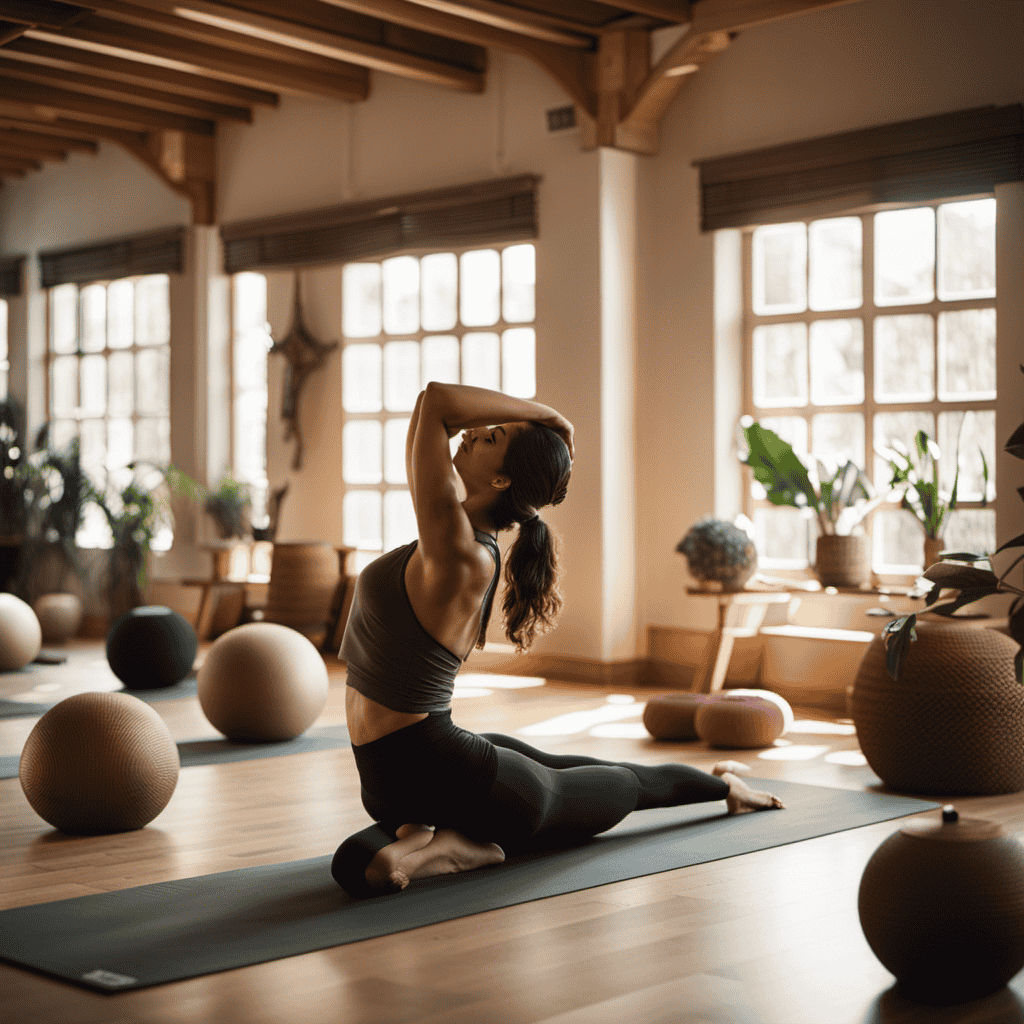
Are you aware that engaging in yoga can help alleviate back pain?
Research shows that yoga increases flexibility, reduces muscle tension, and improves posture, making it an effective holistic approach to managing chronic back pain.
In addition to alleviating discomfort, yoga offers benefits such as improved mindfulness and better sleep quality.
By incorporating specific poses and breathing techniques, yoga can help increase oxygen flow and promote relaxation, contributing to pain relief.
Before starting a yoga practice for back pain relief, it is important to consult a healthcare professional to ensure safety and effectiveness.
Key Takeaways
- Yoga is a beneficial practice for managing chronic back pain, as it increases flexibility, reduces muscle tension, and improves posture.
- Specific yoga poses, such as the cat/cow pose and cobra pose, can provide relief from discomfort associated with back pain by improving flexibility and strengthening core muscles.
- Yoga breathing techniques, like diaphragmatic breathing, promote relaxation and help manage pain by increasing oxygen flow and enhancing mindfulness.
- It is important to consult a healthcare professional before starting yoga for back pain relief to ensure safety, effectiveness, and a personalized approach to individual needs.
What is it?
I know that yoga for back pain relief is a beneficial and accessible form of exercise. It increases flexibility, reduces muscle tension, and improves posture.
However, there are some common misconceptions about yoga for back pain that should be addressed. One misconception is that yoga poses can be harmful for those with back pain. While it is important to take precautions and modify poses as needed, yoga can actually help alleviate discomfort and provide relief.
It is also crucial to consult with a healthcare professional before starting a yoga practice for back pain, as they can provide personalized guidance and ensure safety. With the right modifications and guidance, yoga can be a valuable tool in managing chronic back pain and improving overall well-being.
Benefits and Effects
Research shows that practicing yoga can increase flexibility, reduce muscle tension, improve posture, and provide relief from discomfort associated with chronic back issues. The effects of yoga on back pain are significant, as it not only targets the physical aspects but also addresses the mind-body connection.
Yoga incorporates mindful movement and deep breathing, which promotes relaxation and calmness, helping to manage pain. By focusing on the breath and being present in the practice, individuals can enhance their awareness of the body and better manage their pain.
The holistic approach of yoga for back pain relief considers the mental and emotional aspects of pain as well. It provides a well-rounded solution for managing chronic conditions by combining poses, breathing techniques, and mindfulness practices.
With regular yoga practice, individuals can experience improved flexibility, reduced muscle tension, better posture, and overall relief from discomfort associated with back pain.
Specific Poses
One specific pose that can help alleviate discomfort in the back is the cat/cow pose. This pose involves alternately arching and relaxing the back to improve flexibility. When practicing this pose, you may experience a sense of relief and release in your back muscles. It can provide a gentle stretch and help to reduce tension in the spine.
Here are five emotional benefits of incorporating the cat/cow pose and the triangle pose into your yoga practice:
- Increased sense of freedom and mobility in the spine
- Relief from the tightness and stiffness in the back
- A feeling of grounding and stability in the body
- Improved energy flow and circulation throughout the back
- A sense of empowerment and control over your own pain management
By regularly practicing these poses, you can begin to find relief from back pain and improve your overall well-being. Remember to listen to your body and modify the poses as needed to suit your individual needs.
Breathing Techniques
When practicing breathing techniques during yoga, it is important to focus on deep diaphragmatic breaths to increase oxygen flow and promote relaxation in the body. Diaphragmatic breathing, also known as belly breathing, involves breathing deeply into the abdomen rather than shallowly into the chest. This technique helps to activate the relaxation response in the body, reducing tension and promoting a sense of calmness.
In yoga, the mind-body connection is emphasized, and this is particularly true when it comes to breathing. By focusing on the breath and practicing diaphragmatic breathing, we can enhance mindfulness and improve our ability to manage pain. This technique not only helps to relax tight muscles, but it also increases our awareness of the body and its sensations.
By incorporating diaphragmatic breathing into our yoga practice, we can experience the benefits of improved pain management, increased relaxation, and a deeper sense of overall well-being.
Consulting a Professional
Before starting a yoga practice for back pain, it is important to consult with a healthcare professional to ensure safety and effectiveness.
Seeking medical advice is crucial because a doctor can provide guidance tailored to your specific needs and condition. They can help you find the right combination of poses, breathing techniques, and mindful practice to manage your chronic back pain effectively.
Consulting a professional ensures that you are practicing yoga in a way that is safe and beneficial for your back. They can also provide personalized recommendations based on your individual needs, helping you address any concerns or limitations you may have.
With the guidance of a healthcare professional, you can confidently embark on your yoga journey and manage your back pain with expert support.
Accessibility and Adaptability
I can adapt my yoga practice to suit my individual needs, making it an ideal option for seeking relief from back pain. Yoga is a highly adaptable form of exercise that can be modified to accommodate different body types and conditions. When it comes to back pain relief, there are various yoga modifications that can be implemented.
For example, props and modifications can be used to support the body and make poses more accessible for those with back pain. This can include using blocks, straps, or blankets. Modifying poses by using a chair or wall for stability can also be beneficial.
In addition, incorporating gentle movements and stretches can help alleviate back pain without causing further strain. Slow and gentle movements can provide relief and improve flexibility. Targeting the back, hips, and hamstrings with gentle stretches can be particularly effective.
By adapting my yoga practice to suit my individual needs, I can effectively address my back pain and experience the benefits of yoga for overall well-being.
Impact on Sleep and Posture
By improving my sleep quality and posture, yoga helps reduce discomfort and promotes overall well-being.
Regular yoga practice has been shown to have a positive impact on sleep quality, enhancing relaxation and reducing stress levels. By promoting better sleep patterns and deeper rest, yoga can alleviate discomfort and pain experienced during sleep.
Additionally, yoga helps correct posture by strengthening core muscles for better alignment. This reduces strain on the back and spine, correcting imbalances and promoting proper alignment. As a result, overall body posture is enhanced, leading to reduced back pain.
Yoga takes a holistic approach to back pain management, addressing not only the physical aspects but also the mental and emotional aspects of pain. By combining poses, breathing techniques, and mindfulness practices, yoga provides a well-rounded solution for managing chronic conditions and enables individuals to live a more comfortable life with reduced back pain.
Frequently Asked Questions
What are some common causes of back pain that yoga can help relieve?
Yoga can help relieve back pain caused by various factors, such as muscle tension, poor posture, and injuries. By improving flexibility and posture, yoga helps prevent injuries and promotes proper alignment, reducing back pain.
Are there any specific precautions or modifications to keep in mind when practicing yoga for back pain?
When practicing yoga for back pain, it’s important to take precautions and make modifications. Listen to your body, avoid poses that exacerbate pain, and work with a qualified instructor to ensure a safe and effective practice.
Can yoga be used as a standalone treatment for chronic back pain, or is it recommended to be used in conjunction with other therapies?
Yoga can be used as a primary treatment option for chronic back pain, offering a holistic approach to relief. However, it is also recommended to be used in conjunction with other therapies for comprehensive pain management.
Are there any potential risks or contraindications of practicing yoga for back pain relief?
Potential risks and contraindications of practicing yoga for back pain relief include aggravating existing injuries, overexertion, and improper alignment. It’s important to be aware of common causes of back pain and consult a healthcare professional for guidance on safe and effective yoga practice.
How long does it typically take to see improvements in back pain symptoms with regular yoga practice?
With regular yoga practice, improvements in back pain symptoms can vary. Some individuals may experience relief within a few weeks, while others may take several months. Consistency and personalized yoga techniques are key to maximizing yoga benefits for back pain relief.
Conclusion
In conclusion, yoga is a powerful tool for managing back pain holistically. Its benefits range from increased flexibility and muscle tension reduction to improved mindfulness and sleep quality. By incorporating specific poses like the cat/cow, child’s pose, cobra pose, triangle pose, and downward facing dog, individuals can find relief from discomfort and improve their overall well-being.
Additionally, practicing yoga breathing techniques such as diaphragmatic breathing can further promote pain relief and relaxation. It’s important to consult a healthcare professional for personalized guidance.
Did you know that research shows that practicing yoga for just 12 weeks can reduce back pain by 64%? This statistic highlights the significant impact yoga can have on individuals seeking relief from back pain.
Meet Nadi, the soulful writer and explorer of inner realms who graces OurMindAndBody.com with her profound insights and heartfelt wisdom. With a profound passion for mindfulness, meditation, and spiritual growth, Nadi weaves words that touch the hearts and minds of readers, leaving a lasting impact on their well-being journey.
Rooted in a background of philosophy and psychology, Nadi’s curiosity about the human mind and the mysteries of the soul led her on a transformative path of self-discovery. Drawn to the transformative power of mindfulness and meditation, she embarked on a quest to understand the intricacies of these practices, not only for her own growth but also to inspire others to embark on their own inner journeys.
Yoga
Unveiling The Financial Rewards And Emotional Fulfillment Of Yoga Teaching
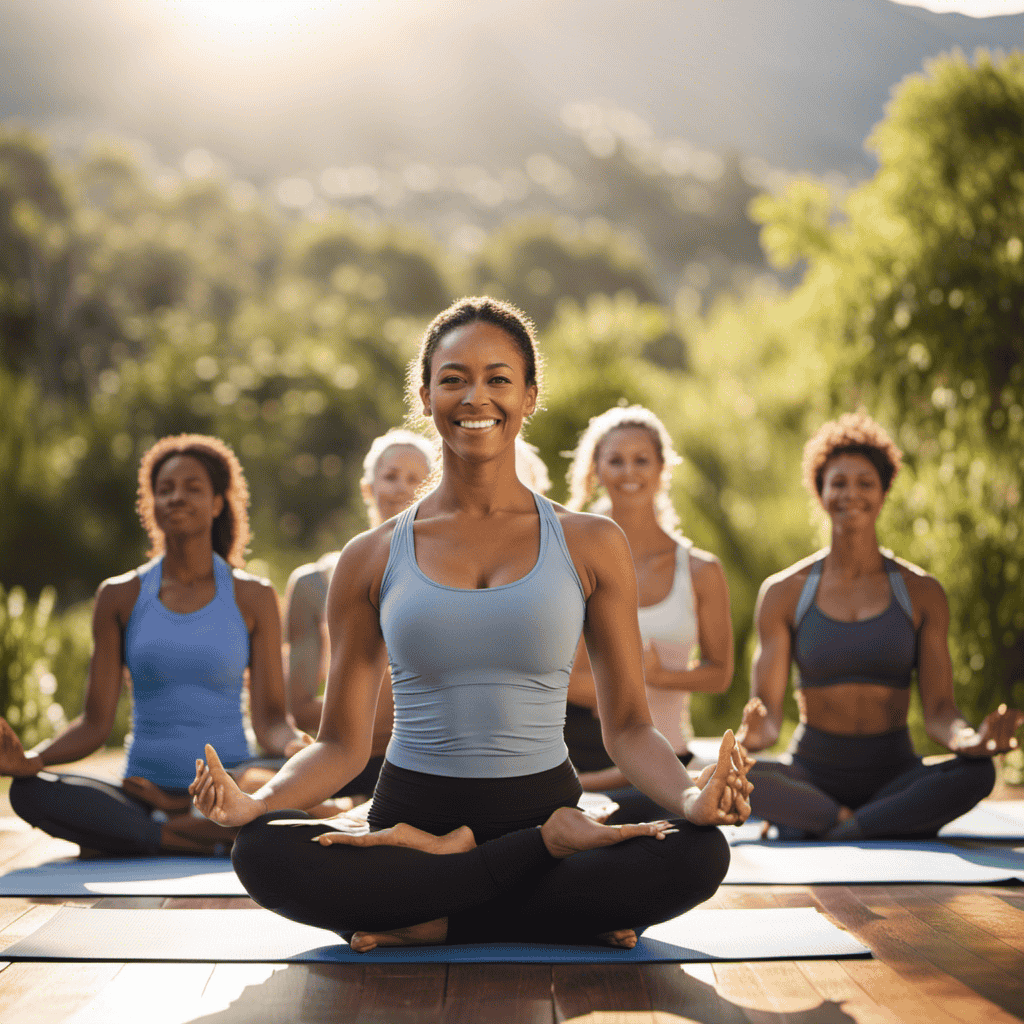
They say that money can’t buy happiness, but what if I told you that being a yoga teacher can provide both financial benefits and emotional fulfillment?
It’s true – as a yoga instructor, I’ve experienced firsthand the incredible potential for financial success, with the possibility of earning a six-figure income.
But it’s not just about the money. The true beauty lies in the emotional impact we have on our students, helping them find peace, healing, and a sense of community.
Join me as we delve into the hidden treasures of yoga teaching, unveiling the financial rewards and emotional fulfillment that await.
Key Takeaways
- Yoga teaching offers the potential for a six-figure income and a gradual increase in earnings with experience.
- Location and demand, as well as specialized skills and the number of classes taught, can significantly influence a yoga instructor’s income.
- Being a yoga instructor provides emotional fulfillment through helping others, making a positive impact on students’ lives, and creating a peaceful and supportive environment.
- Yoga teaching allows for opportunities to deepen one’s understanding of yoga, open doors to teaching opportunities, and increase earning potential through additional income streams.
Financial Rewards
Being a yoga instructor has the potential to provide a six-figure income, with earnings gradually increasing as I gain more experience and build a solid client base.
As a yoga teacher, I have the opportunity to earn a substantial income through various channels. The average yoga instructor salary can range from $35,000 to $65,000 per year, depending on factors such as location, experience, and specialization. However, with dedication and a strong work ethic, it is possible to earn even more.
Teaching private sessions, workshops, and retreats can significantly boost my yoga teaching income. Additionally, offering online classes and creating digital products can provide additional streams of revenue.
By consistently delivering high-quality classes and building strong relationships with my students, I can establish financial stability and enjoy the financial rewards that come with being a yoga instructor.
Challenges and Balancing
Balancing the demands of teaching yoga can be a challenge, especially when it comes to managing administrative tasks and maintaining a steady income. As a yoga instructor, I have learned the importance of work-life balance and effective time management to overcome these challenges. Here are three key strategies that have helped me navigate the demands of teaching yoga:
-
Prioritizing self-care: Taking care of my own physical, mental, and emotional well-being is crucial in order to show up fully for my students. This means setting boundaries, scheduling regular self-care activities, and carving out time for personal practice.
-
Streamlining administrative tasks: To avoid feeling overwhelmed, I have implemented systems and tools to streamline administrative tasks such as scheduling, client communication, and payment processing. This allows me to focus more on teaching and connecting with my students.
-
Diversifying income sources: To maintain a steady income, I have explored opportunities to diversify my income sources. This includes offering private sessions, workshops, retreats, and online classes. By diversifying my offerings, I can not only increase my earning potential but also create a more stable financial foundation.
Finding a balance between teaching yoga and managing other aspects of my life has been a journey of trial and error. However, by prioritizing self-care, streamlining administrative tasks, and diversifying my income sources, I have been able to create a more sustainable and fulfilling career as a yoga instructor.
Growing Demand
As a yoga instructor, I have noticed a significant increase in demand for qualified instructors due to the growing recognition of the health benefits of yoga and the focus on wellness and stress reduction.
This increasing demand has opened up numerous opportunities for career growth in the field of yoga teaching. As more people become aware of the positive impact yoga can have on their lives, they are seeking out qualified instructors to guide them on their yoga journey.
To meet this demand, it is important for yoga instructors to continue to enhance their qualifications and certifications. By obtaining specialized skills and certifications, instructors can set themselves apart from the competition and attract a larger client base. This not only increases their earning potential but also allows them to make a greater impact on the lives of their students.
Factors Influencing Income
To understand the factors that influence my income as a yoga instructor, I need to consider my experience, client base, specialized skills, location, demand, number of classes taught, and the type of yoga I offer. These factors play a crucial role in determining how much I can earn from teaching yoga. Having specialized skills, such as being trained in specific yoga styles or having expertise in certain areas, can attract more students and lead to higher income opportunities. Additionally, the location and demand for yoga in a particular area can greatly impact my earning potential. Teaching in a city with a high demand for yoga can result in more classes and higher rates, while teaching in a rural area may limit the number of students and income. It is important to consider these factors when planning my yoga teaching career to maximize my income potential.
| Specialized Skills | Location and Demand |
|---|---|
| Advanced Yoga Styles | Urban Areas |
| Yoga Therapy | Wellness Retreats |
| Prenatal Yoga | Health and Fitness Centers |
| Yoga for Athletes | Corporate Settings |
This table showcases the importance of specialized skills and being in a location with high demand. By offering advanced yoga styles or specialized classes, I can attract a niche audience and charge higher rates. Similarly, teaching in urban areas or at wellness retreats can provide more opportunities for income growth. It is essential to continuously improve my skills and stay updated with the latest trends in the yoga industry to ensure financial success as a yoga instructor.
Income Potential
Maximizing my income potential as a yoga instructor requires understanding the factors that influence my earnings. These factors include my experience, client base, specialized skills, location, demand, number of classes taught, and the type of yoga I offer.
These factors play a crucial role in determining the financial rewards I can achieve in my career. By continuously honing my skills and gaining experience, I can attract a larger client base and increase my earning potential.
Additionally, staying updated with market trends and understanding the demand for certain types of yoga can help me tap into new opportunities for career growth. It is important to establish a solid reputation in the industry and build a strong network to increase my income potential.
By staying committed to my practice and constantly adapting to the ever-changing market, I can strive for financial success while making a positive impact on others’ lives.
Passion and Impact
Passion for yoga drives me to make a positive impact on my students’ lives through teaching. I believe that yoga has the power to bring about personal transformation and I am dedicated to helping my students experience this. As a yoga instructor, I see myself as more than just a teacher, but also as a guide on their journey towards physical and emotional well-being. Witnessing the positive influence of yoga on my students is incredibly fulfilling. It is a privilege to create a peaceful and supportive environment where they can connect with their bodies, release emotions, and find inner peace. The emotional release that can occur during yoga is a cathartic experience, allowing for deep healing and growth. I am grateful to be able to contribute to my students’ overall well-being and be a part of their positive transformation.
| Positive Influence | Personal Transformation |
|---|---|
| Helping students find | Guiding students on |
| inner peace | their journey towards |
| personal growth | |
| Creating a supportive | Facilitating emotional |
| and peaceful environment | healing and release |
| Witnessing the positive | Contributing to |
| impact of yoga on | students’ overall |
| students’ lives | well-being |
Emotional Release
Experiencing emotional release during yoga is a transformative and cathartic experience that allows for deep healing and growth. It is a sacred space where the connection between the body and emotions becomes evident.
Yoga provides a safe and nurturing environment to explore and release pent-up emotions that may have been stored in the body for years. As we move through the physical postures and focus on our breath, we begin to unravel and release emotional tension that no longer serves us.
This cathartic experience can bring about a profound sense of liberation and relief. It is not uncommon to shed tears during yoga, as these tears often represent a release of emotional pain.
By acknowledging and honoring our emotions on the mat, we can cultivate greater emotional well-being and find a deeper sense of peace within ourselves.
Importance of Emotional Well-being
In our exploration of the emotional release experienced during yoga, we now shift our focus to the importance of emotional well-being. As a yoga instructor, I have witnessed firsthand the profound impact that yoga can have on one’s emotional state. It is not just about physical fitness; rather, yoga emphasizes the connection between the mind and body. By practicing mindfulness and self-care, individuals can cultivate a deeper understanding of their emotions and learn to manage them effectively. This process allows for greater emotional stability and overall well-being.
To further illustrate the significance of emotional well-being in yoga, let me present a table that showcases the various aspects involved:
| Aspect | Description |
|---|---|
| Connection between | Yoga teaches us to be present in the moment, fostering a deep connection between our |
| mind and body | thoughts and physical sensations. This connection is vital for emotional awareness. |
| Mindfulness | By practicing mindfulness in yoga, individuals can develop a heightened sense of |
| self-awareness, enabling them to recognize and address their emotional needs. | |
| Self-care | Yoga encourages individuals to prioritize self-care, which includes taking the time to |
| nurture their emotional well-being. It promotes self-compassion and self-acceptance. |
By emphasizing the importance of emotional well-being in yoga, we can help our students find balance and cultivate a deeper connection with themselves.
Frequently Asked Questions
How can yoga instructors balance their teaching schedule with other responsibilities?
To balance my teaching schedule with other responsibilities, I prioritize work-life balance and practice effective time management. I set boundaries, create a schedule, delegate tasks, and make self-care a priority. It’s essential to find a healthy balance between my teaching career and personal life.
What are some effective strategies for managing administrative tasks as a yoga teacher?
Managing administrative tasks as a yoga teacher requires the precision of a well-tuned instrument. Time management and organization are key to staying on top of paperwork, scheduling, and communication, allowing for seamless operations and a balanced teaching schedule.
How can yoga instructors maintain a steady income in a fluctuating market?
To maintain a steady income in a fluctuating market, yoga instructors can diversify their income streams by offering private sessions, workshops, and retreats. Building a strong client base and adapting to market trends are also essential for income stability.
What are some effective ways for yoga instructors to overcome competition in their field?
Building community and forming collaborative partnerships are effective ways for yoga instructors to overcome competition. By creating a supportive network and working together with other instructors, we can uplift and empower each other in this field.
Can emotional well-being be enhanced through the practice of yoga teaching?
Yoga teaching has a profound impact on mental health, enhancing emotional well-being. Through the practice, students experience emotional healing, release, and a deeper connection between their bodies and emotions. It creates a peaceful and supportive environment for personal growth.
Conclusion
In conclusion, the world of yoga teaching offers a unique blend of financial rewards and emotional fulfillment. As instructors, we have the potential to earn a substantial income while doing what we love. However, it is important to navigate the challenges and find balance in our lives.
By understanding the factors that influence our income and continuously growing our skills, we can achieve financial stability. More importantly, our passion for yoga allows us to make a meaningful impact on the lives of our students, creating a supportive and healing environment.
Yoga teaching not only provides a release for our emotions but also emphasizes the importance of emotional well-being. Through this cathartic experience, we find a deep sense of fulfillment, both for ourselves and our students.
As we continue on this journey, let us remain knowledgeable, compassionate, and disciplined, embracing the figure of speech that life is a marathon, not a sprint.
Meet Nadi, the soulful writer and explorer of inner realms who graces OurMindAndBody.com with her profound insights and heartfelt wisdom. With a profound passion for mindfulness, meditation, and spiritual growth, Nadi weaves words that touch the hearts and minds of readers, leaving a lasting impact on their well-being journey.
Rooted in a background of philosophy and psychology, Nadi’s curiosity about the human mind and the mysteries of the soul led her on a transformative path of self-discovery. Drawn to the transformative power of mindfulness and meditation, she embarked on a quest to understand the intricacies of these practices, not only for her own growth but also to inspire others to embark on their own inner journeys.
-

 Personal Growth2 months ago
Personal Growth2 months agoThe Power Of Kindness: Cultivating Happiness, Connection, And Personal Growth
-

 Meditation2 days ago
Meditation2 days agoUnderstanding Spiritual Attacks: Types, Signs, And Protection
-

 Aura2 weeks ago
Aura2 weeks agoUnderstanding The Grey Aura: Balance, Neutrality, And Personal Growth
-

 Spirituality3 months ago
Spirituality3 months agoThe Power Of Spiritual Connection: Definition, Importance, And Ways To Achieve
-

 Spirituality2 months ago
Spirituality2 months agoStarting Your Spiritual Journey: Self-Reflection, Growth, And Connection
-
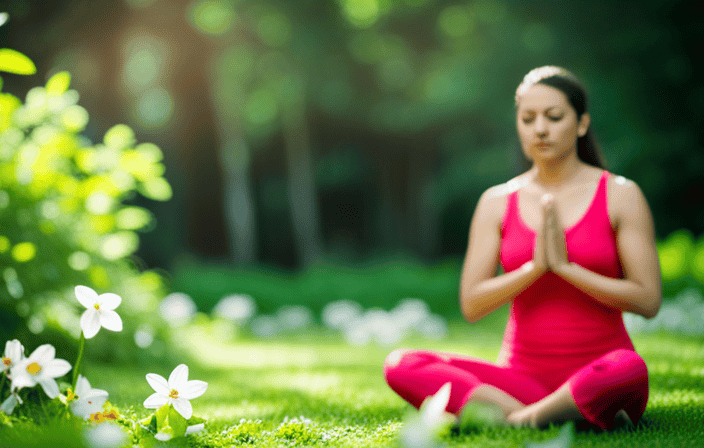
 Spirituality3 months ago
Spirituality3 months agoConnecting Spirituality And Daily Life: Embracing Universal Values
-

 Spirituality3 months ago
Spirituality3 months agoThe Mystical Realms: Exploring Spiritual Dimensions
-

 Meditation3 weeks ago
Meditation3 weeks agoThe Symbolic Significance Of Sand Dollar: Spiritual Meanings And Cultural Connections
